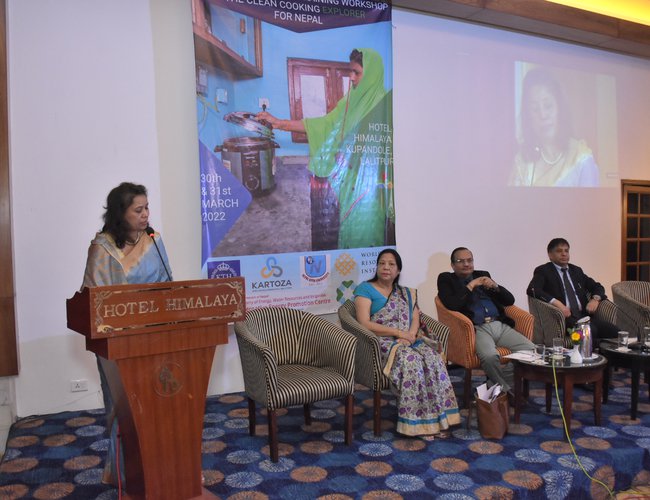
Since her appointment as the Minister for Energy, Water Resources and Irrigation, Pampha Bhusal has been harping only one slogan: replace LPG from kitchen by clean electricity.
“Since Nepal Electricity Authority (NEA) has surplus electricity in its grid, the government is making every possible effort to replace LPG by supplying sustainable and quality clean electricity to Nepali households. We are also working to develop a modality to provide the subsidy to consumption of electricity and purchasing the cooking utensils to the poor and vulnerable population,” minister Bhusal told New Spotlight.
“The Government is deeply committed to achieving universal access to clean cooking by 2030. Thanks to tools like the Clean Cooking Explorer, there will be an evidence-based path to accelerating a national transition to clean cooking in Nepal.”
As minister Bhusal and other people are talking about the need to replace LPG by induction, rural people in Timal Village of Kavrepalanchwok district have already replaced their LPG stoves bringing electric devices and utensils. With the demand for the devices increasing, Kalpana Lama, a volunteer working to make Timal smoke free Village, is facing tough choice. Lama said that the induction gives relief to the women. She holds the view that such campaign are successful not on slogan but on work.
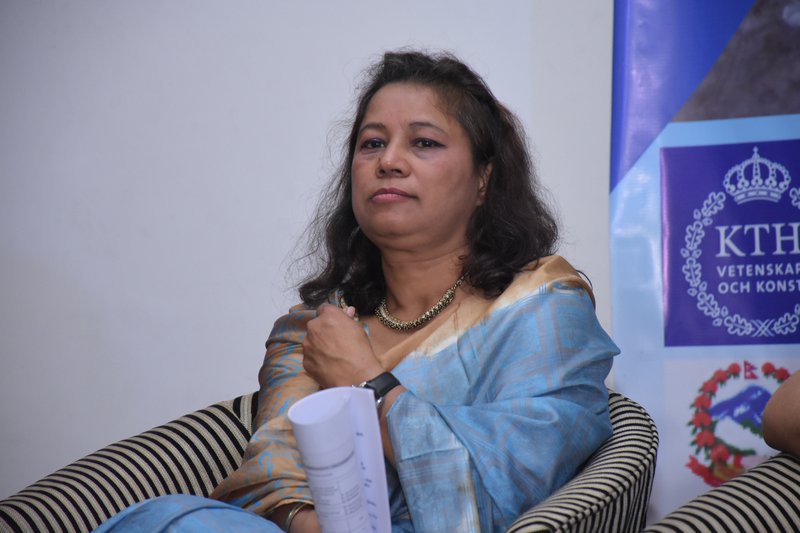
She said that they distributed 600 induction last year with an aim to make Timal Smoke free. She has distributed 1000 induction on April 24.
Lama said spending optimum Rs. 640 is enough to cook food for month compared to almost Rs.1200 for LPG. To materialize the commitment expressed by Nepal government and minister Bhusal, various international organizations and Nepal’s development partners have been providing financial support to government bodies like AEPC, local NGOs and community based organizations.
With the funding from endev Nepal, a GIZ supported clean energy project has been providing resources in distributing the clean electric cooking stoves in Dhading and Kavrepalanchwok districts.
As part of the project, Ajummery Bikas Foundation, National Association of Community Electricity User Nepal and Radio Sagarmatha in collaboration with government has been implementing National Electric Cooking Campaign since last 3 years. The distribution of clean cooking devices in Timal is part of the campaign.
After launching of the Explorer, persons interested in clean cooking will find all the data bases and information now in Clean Cooker Explorer for Nepal. This will help an informed decision making process.
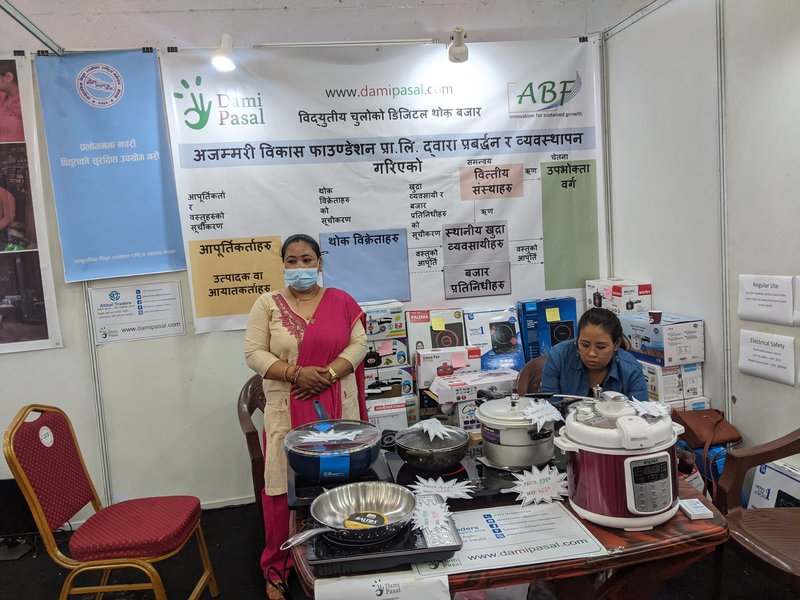
Distribution of Clean Cooking Devices
In collaboration with various agencies, Alternative Energy Promotion Center (AEPC) has already launched a campaign to convert 50,000 households into clean cooking. AEPC also received fund from Green Climate Fund for clean cooking.
With this kind of program from AEPC and other non-governmental organizations, Minister Bhusal’s ambitions and determination to replace all LPG were understandable. Good news is also there in increasing the generation of electricity bin Nepal. After years of electricity deficit, Nepal is going to have surplus of over 600 MW of electricity from coming monsoon.
With no buyer, NEA had to shut down the plants losing over Rs.300 million revenue last year from July to September. As some more projects are at the stage of generation, NEA will have more surplus electricity on its grid for up to five months till October. Under the leadership of Managing Director Kul Man Ghising, NEA is now working to improve the distribution lines across the country not to waste electricity in coming wet season.
At a time when there is not sign of receding the current global prices of petroleum products including Liquefied Petroleum Gas, diverting the surplus electricity to Nepalese kitchen can save Nepal’s foreign currency and help NEA to increase revenue.
Because of infrastructural constraints and seasonal fluctuation in generation, it is not as easy to replace LPG as is said. However, this is the right time to effectively start replacement of LPG and traditional energy from cooking.
As NEA has already started to improve the distribution systems and construction of storage projects, intensification of campaign by national and international level organizations to clean cooking push Nepal into a new stage. The Global Launch of the Clean Cooking Explorer for Nepal is one milestone.
Why Clean Cooking Explorer?
Access to clean cooking technology, such as electric and gas stoves, transforms lives by improving health, protecting the climate and the environment, empowering women, and helping consumers save time and money.
As the household air pollution generated whilst cooking indoors has serious, negative health impacts, with women and children disproportionately affected, the use of clean cooking reduces it.
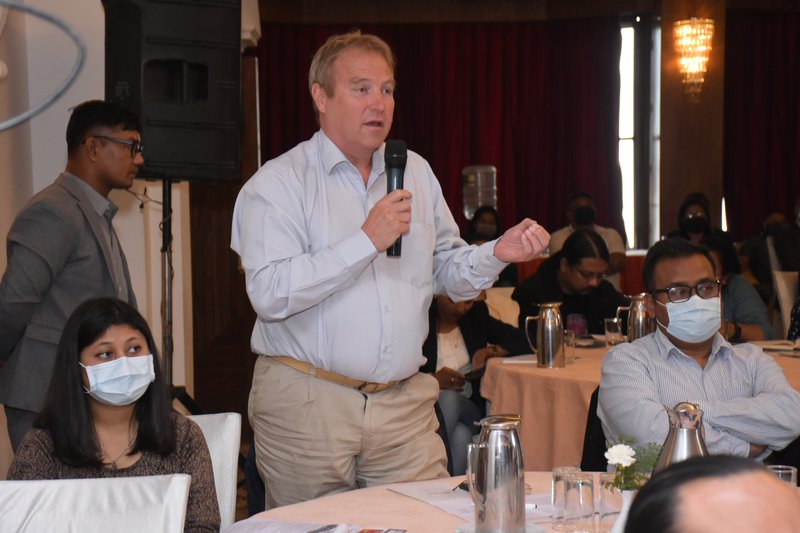
Launching Global Clean Cooking Explorer
At a time when Nepal Government has prioritized energy access as a vital step to improve population welfare, economic prosperity, and energy sovereignty for the country, a consortium of national and international organizations launched the Clean Cooking Explorer for Nepal.
Organized by Alternative Energy Promotion Center (AEPC), in partnership with the Clean Cooking Alliance (CCA), World Resources Institute, Nepal Open University, Kartoza, and KTH Royal Institute of Technology, member of National Planning Commission Dr. Surendra Lav Karna opened the Global Launch of the Clean Cooking Explorer for Nepal.
In his inaugural address, Dr. Karna has said that this is highly important for sharing the information regarding clean cooking in Nepal, He said that promoting clean cooking has many advantages for Nepal including how it helps to reduce the impact of climate change, save the life of people by reducing traditional energy and reduce Nepal’s foreign trade imbalance offering clean energy generated in Nepal.
Keeping in mind to fulfill SDG’s goal, Nepal government has announced the years 2018 to 2028 as the “Decade of Energy and Hydropower” to realize the dream of “Prosperous Nepal, Happy Nepali.”
In line with this vision, Nepal Government has set ambitious clean cooking targets that include the adoption of electric cooking by 25% of households nationwide by 2030. The availability of relevant data and tools can play a significant role in promoting clean cooking throughout Nepal to achieve its clean cooking targets. Moreover, location-specific data allows the development of comprehensive and regional specific support and decision-making with the integration of information related to supply and demand.
This integrated energy planning platform aims to provide stakeholders across public and private sectors with the data and tools needed to inform their strategies for a robust clean cooking transition. The platform integrates and analyzes geospatial datasets related to both the potential demand and supply of clean cooking technologies, enabling data-driven planning, coordination, and decision-making to support the uptake and adoption of clean cooking throughout the country. Learn more by visiting CleanCookingExplorer.org.
In her opening remarks, Karuna Bajracharya from Clean Cooking Alliance said that Global Launching of the clean cooking explorer for Nepal is important step to achieve the target to provide clean cooking to all Nepalis. She expressed happiness over the support given by the APEC to make this possible.
The Clean Cooking Explorer is the first of its kind online, open-source, and interactive geospatial data platform for accelerating clean cooking access in Nepal. The spatial platform integrates and supports analysis of geospatial datasets related to both the potential demand and supply of clean cooking services, allowing for data-driven planning, coordination, and decision-making to support the uptake and adoption of clean cooking. The tool will play an important role in helping the Government of Nepal achieve its ambitious clean cooking target, which include 25% of households using electric cooking by 2030.
Madhusudhan Adhikari, the Executive Director of the Alternative Energy Promotion Center, Dymphna van der Lans, Clean Cooking Alliance, also addressed the program through video remarks.
As the availability of relevant data and tools can play a significant role in promoting clean cooking throughout Nepal to achieve its clean cooking targets, the global launching is important.
The explorer, among others, provides location-specific data which allows the development of comprehensive and regional specific support and decision-making with the integration of information related to supply and demand.
This integrated energy planning platform aims to provide stakeholders across public and private sectors with the data and tools needed to inform their strategies for a robust clean cooking transition. The platform integrates and analyzes geospatial datasets related to both the potential demand and supply of clean cooking technologies, enabling data-driven planning, coordination, and decision-making to support the uptake and adoption of clean cooking throughout the country. One can learn more by visiting CleanCookingExplorer.org.
Addressing the program, vice chancellor of Open University Shilu Bajracharya said that working in collaboration with many organizations also help university in improving the research capability.
CCA In Campaign
Clean Cooking Alliance (CCA) recognizes Nepal’s commitment to clean cooking as an important opportunity. The development of a clearly defined and evidence-based Country Action Plan will prioritize strategic activities essential to scaling up the adoption of clean cooking.
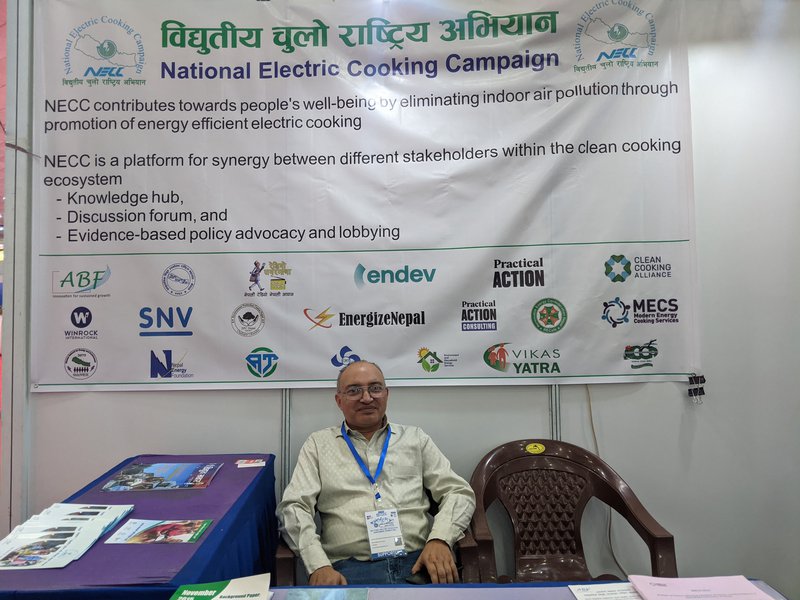
CCA is now supporting to formulate the Country Action Plan which will provide Nepal government with a clear direction regarding specific activities, associated targets, and timeframes.
The plan will provide a holistic guide on steps forward for the next five years to strengthen the supply of clean cooking, expand demand generating efforts, and support the Nepal government in executing a large-scale clean cooking effort in Nepal.
The plan will highlight the strengths of stakeholders and support work across sectoral boundaries to push for an integrated approach. CCA expects to complete the Country Action Plan in 2021, and is playing a central role in coordinating with the government of Nepal and in-country partners working on energy access.
As per the plan, the goal is to install 500,000 improved cooking stoves, primarily in rural areas, and an additional 200,000 household biogas plants and 500 large scale biogas plants by 2025 though various mechanism institutional, industrial and community. There is also plan that, by 2030, ensures that electric stoves are used as the primary mode of cooking in 25 per cent of households.
Nepal’s Commitment
Presenting its Nationally Determined Contributions under Paris Agreement, Nepal has already committed to reduce the carbon emissions by 2030 reducing the use of petroleum products.
It says 25 percent household will have electric stoves as a primary cooking application. Similarly, SDG says to reduce household cooking fuel wood by 30 percent and limits households cooking by LPG less than 40 percent
Similarly, Ministry of Energy, Water Resources and Irrigation projected to increase per capita electricity consumption 1500 kWh by 2030 with electric stove in every household. For this, this year’s budget announces waiver of excise duty and reduction of custom duty on household cooking appliances.
To meet Nepal’s target of universal access to clean cooking solutions by 2030, the government of Nepal plans to leverage the country’s immense potential for hydroelectric generation.
Broader Campaign
However, this needs a broader strategy to cover the mass population. As 2030 is approaching, some model programs need to be launched to promote clean cooking in mass.
“Let’s start it from Nepal’s 2700 police posts offering them subsidized cooking utensils and induction and electricity. Just launching it at the small scale level does not meet the required target. The campaign must go covering the large areas. For this, the campaign needs to go to Terai where government is implementing to supply electricity to all by 2025. Before going to palika level, it is better to start from organized units like Nepal Police because they can use off peaking to cook their foods,” said Mohan Manandhar, an energy expert.
Nepal’s State of Energy
Nepal's energy use is primarily dominated by traditional sources of energy, mainly biomass for domestic purposes. Currently, 56 % of the population has regular access to electricity for lighting.
Nepal is planning to generate 12,000 MW of hydropower by 2030 and 2,100 MW of solar energy by 2030 with arrangements to distribute it through the grid.
Similarly, additional 220 MW of electricity from bio-energy 50 MW of electricity from small and micro hydropower plants, increase the share of biogas up to 10% as energy for cooking in rural areas by 2030.
Despite a huge potential for renewable energies such as hydropower, solar power and wind energy, these resources have not been sustainably captured due to geographical, technical, political and economical reasons.
Nepal has continued to prioritize the generation and utilization of clean energy, particularly through hydro-electricity at a larger scale. For the last two decades, micro hydro, solar, biogas and improved cook stoves have found use at the rural scale and in line with the National Rural and Renewable Energy Program in the recent years.
Moreover, the recent fuel crisis since last three months has made it urgent to accord high priority to scale up production of renewable energy technologies in order to meet the energy demands of urban, peri-urban and rural areas.
GCF Funding To AEPC
Global Climate Fund (GCF) has signed an agreement with Nepal’s Alternative Energy Promotion Centre (AEPC) to help Nepal’s ability to expand its renewable power and improve energy efficiency.
The signing of the Accreditation Master Agreement (AMA) allows GCF to begin providing funds to address mitigation and adaptation needs in Nepal, focusing on vulnerable communities. AEPC was accredited as a GCF climate action partner in February last year.
For now, the AEPC has already moved ahead with $40 million project which will push for use of electricity and biogas as energy for cooking and switching to improved stoves.
Nepal Government comes out with a strategy to widely distribute clean cooking devices to replace LPG and use the surplus of hydro electricity from the coming session. With the support from the clean cooking alliance, climate fund and donor partners, Alternative Energy Promotion Center is working to distribute the clean cooking devices.
With the support and commitment from all stakeholders, Nepal is moving to achieve clean cooking by 2030. However, it is still early to say how it will go ahead to meet the ambitious goal.
Nepal Is Moving To Clean Cooking
By Madhusudan Adhikari
Global launching of the clean cooking explorer is very important event for people working in clean cooking campaign.
Clean Cooking Explorer for Nepal is a new IT-based technology through which we can learn many things. I have to accept the fact that our preparedness is not that good till now. This is an era of internet technology and explorer is the internet-based IT related platform to share information about the clean cooking status and much needed information including working procedure, decision making and governance.
On the clean cooking issue, AEPC is a pioneer organization helping people though different ways to improve their cooking technology and to improve their access in clean energy.
We have been working in the improvement of mud based stoves and moved to improve stoves for long. Bio-gas is one of our pioneer work which we have been doing. With surplus of electricity, this is time for us to look at the electricity cooking. Use of domestically generated electricity will reduce the import of LPG and balance foreign currency reserve, save health and so many things. On top of that the most important thing reducing the carbon dioxide and black carbon emission to protect the environment.
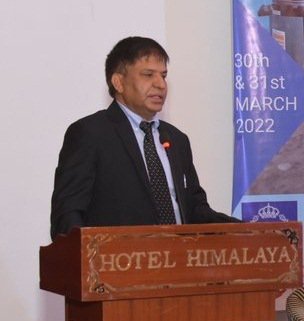
This is just a small initiative looking to the small kitchen of the house where somebody burning wood and getting health problems and polluting the air. By spending a few thousand rupees in kitchen, we can see different aspects and different states. With the help of the person associated with the cooking, we can contribute to the society, to the environment and to the world.
All NGOs, INGOs and Nepal’s development partners have been supporting AEPC. The government has also been committed to the clean cooking. Thus, we need to have proper support system for informed decision making. AEPC is hosting this explorer and we will maintain it. I am also discussing with Clean Cooking Alliance (CCA) and other partners to manage it. I would like to inform you that CCA is helping us in all these aspects. I am equally happy to say that Kathmandu University and Open University and TU who want to handle this, we are ready to transfer. If we put the right thing inside, it could be useful for all in data based decision making. As we are taking decisions based on various other sources like experiences, they are not accurate. However, technology based data system can make our decision making more effective and efficient. Our experiences have shown that date based decision making are always good.
Energy minister is very interested on the clean cooking campaign as she herself asking people to use clean cooking. She also directed Nepal Electricity Authority to improve the distribution system and agree to give incentive as well. CCA agree to work with us in the distribution of clean cooking stoves costing around 5 million dollars. This will be implemented from next year.
Government is also helping AEPC providing 400 to 500 million rupees for clean cooking campaign every year. Currently, we are also discussing on how to offer subsidy to poor and marginalized communities. Supplying cooking stoves is not enough. We have also issues of disruption of supply and peaking issue. There is also issue of energy beyond the pick hour. AEPC held several rounds of discussions with NEA’s MD Kul Man Ghising on the distribution of induction issue.
We all know that existing distribution system in rural areas will not supply electricity to charge induction. Thus, strengthening the infrastructure is key in clean cooking agenda. NEA has assured us that NEA is ready to improve the distribution systems. Along with financing, availability of good quality stove, quality system and maintenance are also keys.
We have also initiated clean cooking support though our annual program and British Embassy supported program. Under this agreement, we have already singed five national cooperative banks to provide loan to people to purchase induction and utensils. they have already started distribution of loan across the country capacitating the user to look into the operation and maintenance. The cooperatives are providing cheaper credit and easy access to electric cooking. We have targeted to provide electric cooking devices o 50,000 households this year. This is target and technical support will be provided to all potential beneficiaries. AEPC is doing best on its part to promote clean energy. It has its own limitations as well. I don’t want to blame anyone for slow pace. So far as the government is concerned, it is ready to work with partner organization through AEPC to promote clean cooking. We are also using our resources to promote clean cooking through the climate fund.
Adhikari is executive director of AEPC. Excerpts of his statement delivered at Global Launch of the Clean Cooking Explorer for Nepal last week.

Keshab Poudel
Poudel is the editor of New Spotlight Magazine.
- HELVETAS NEPAL’S RIVERBED FARMING: Shift From Overseas To Local Farming
- Jul 26, 2024
- POLITICAL SCENARIO : K.P. Sharma Oli's Resurgence
- Jul 21, 2024
- UNDP/MinErgy: An Inventive Approach To Clean Brick Kiln
- Jul 19, 2024
- HELVETAS NEPAL: Nutrition Through Riverbed Farming
- Jul 18, 2024
- NOU Opens To All: Dr. Shilu Manandhar Bajracharya, Vice Chancellor
- Jul 15, 2024
















